Named as one of the “10 Rising Stars of Cinematography” in American Cinematographer Magazine, Anka Malatynska is back in the spotlight with the highly anticipated re-imagination of the Pretty Little Liars franchise. No stranger to dark and gritty worlds, her resume highlights include Hulu’s anthology horror series, Monsterland, Prime Video’s I Know What You Did Last Summer and the Oprah Winfrey produced suspense drama Delilah.
Assemble recently sat down with the impressive Anka (she speaks three languages fluently and is conversational in half a dozen more) to gain industry insight on tackling a well-loved concept, capturing the elements of horror on screen and the best working practices with producers, cast and crew.
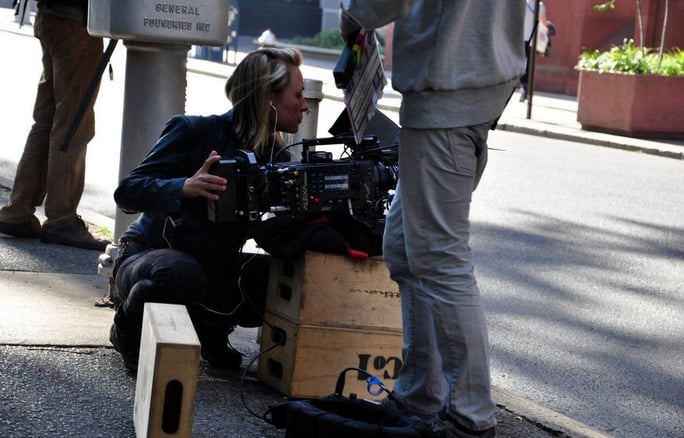
What brought you to cinematography? Did you always see yourself behind the camera?
I was an actor when I was really young. I quit and then didn’t want anything to do with the film industry. I got really into science and photography and that led me back to cinematography. I knew very young I wanted to do something with cameras.
Directors are usually hired for one or more episodes in television, while cinematographers are hired for the entire season. There were at least four directors involved in Pretty Little Liars: Original Sin. How does adapting to different directors affect your work or your working style?
I think the way they come in. They have a huge impact on how I work and how other people work with them. I find that the most successful directors understand that they are coming into an established visual language, but also have their own strong ideas. And at the same time are able to have a conversation about it. Some of my favorite directors are some who are actor driven and really trust me to do the work of the visual storytelling. It's an interesting quandary I feel like as a cinematographer, the maintaining of a look across many directors. I also believe that these directors are coming in and are also hired for some level of specificity of their vision. It’s also about bringing their ideas in and that’s what I feel like I have learned on Pretty Little Liars. It’s so much about bringing in their ideas and evolving the look of the show and that way you can grow and breathe. We can maintain some of the original rules, but we don’t have to be dogmatic about it. I feel like in general, that creates a better work environment.
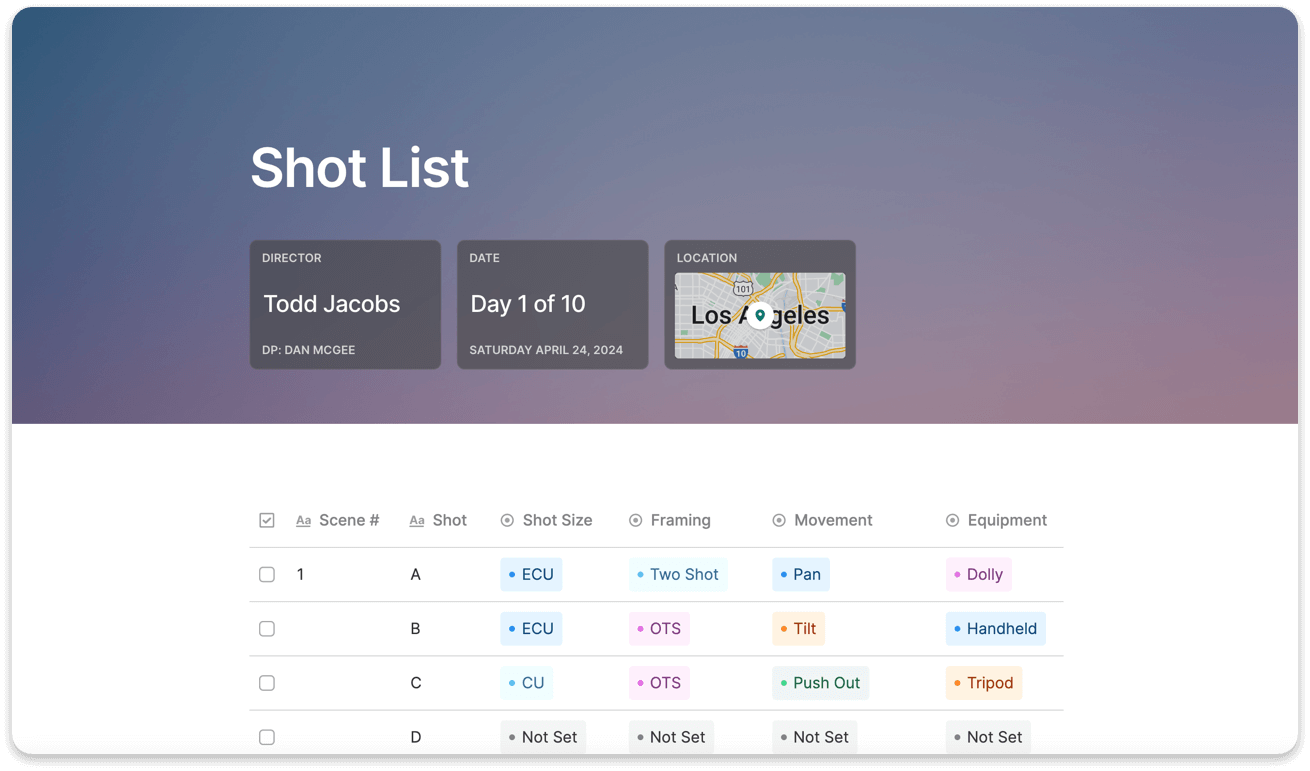
Shot List Template
Use our fully customizable shot list template for all your productions including film, photoshoots, documentaries and more.
Get Template
So much of your work has been in suspense. Do you feel you have a signature style or does each series require a different approach?
A little bit of both. I definitely notice patterns in my work of things that please my eye aesthetically, lighting wise. While at the same time, each project has had a different approach visually in one way or another. I think Pretty Little Liars and I Know What You Did Last Summer are very different, visually. It’s very different from Monsterland too.
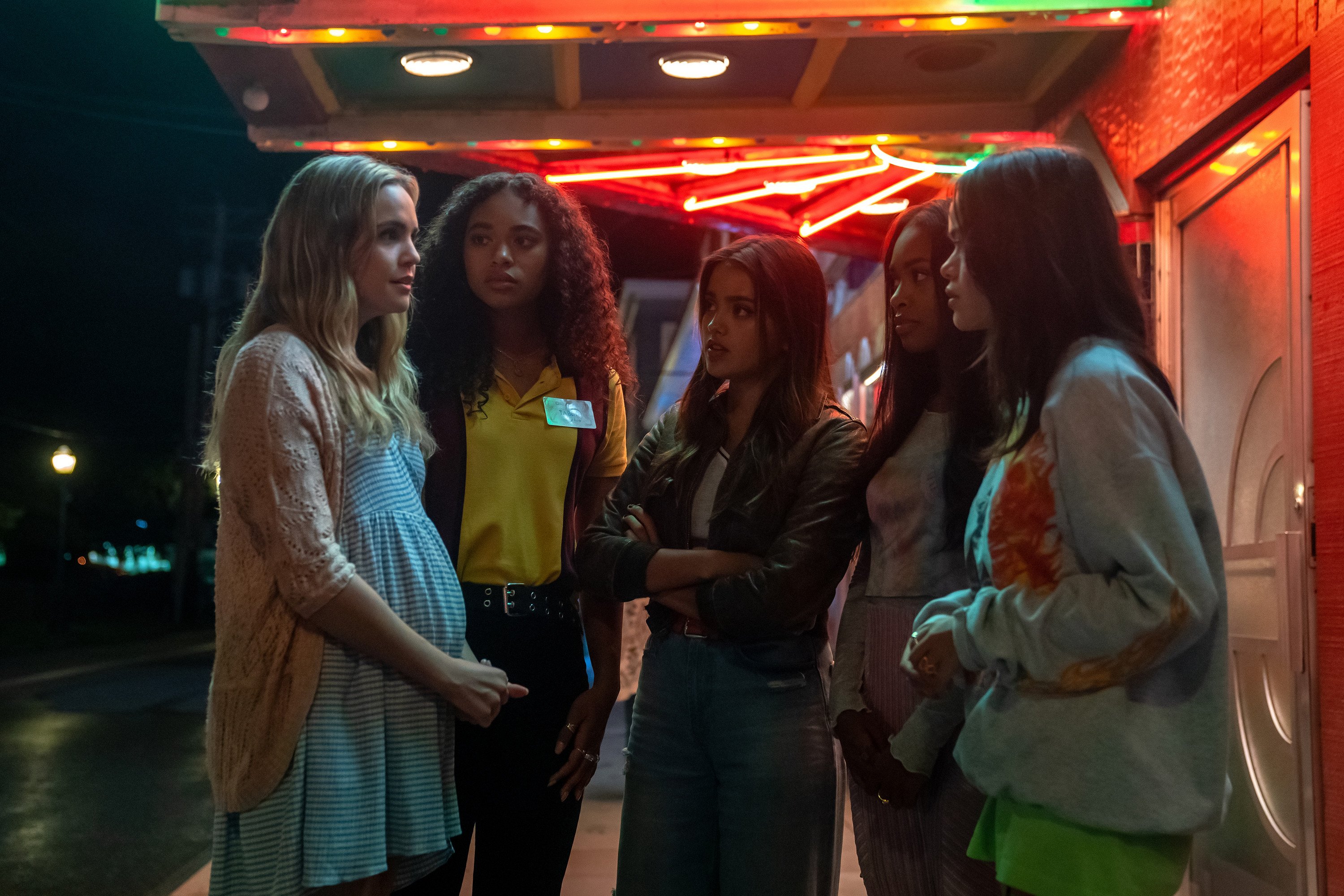
Pretty Little Liars: Original Sin follows a whole new generation of teen liars. Whereas the original series was suspenseful, it never really tipped into horror. This iteration is darker, more modern and goes there in a more disturbing way. What were the discussions with creators Roberto Aguirre-Sacasa, and Lindsay Calhoon-Bring about the new tone, texture and mood of the series?
I came into a look that had been established and was deeply revered and protected by Roberto. He allowed the pilot team to go very dark. It’s hard in TV to go dark. There are a lot of TV shows that say they want to be dark and then you get into the first shooting of the show and the network wants brighter. I think it takes a confident and experienced showrunner to be able to protect his director and cinematographer and say no. I think lighting wise, it’s dark and story wise it’s much darker. Then there is a lot of depth to the darkness of the story. Yet, it’s in this very specific world that is inviting in many ways because it’s beautiful visually.
Tell us about how you prepare technically. What camera do you shoot with and what lens do you use? How does a shoot day typically begin?
The shoot day begins with a blocking rehearsal with the actors. On Pretty Little Liars I only had a chance to shot list with a couple directors. I was the lead cinematographer and that meant that I was shooting while I was prepping. So I was really reliant on the director, either having a very specific plan and shot list or being able to say I don’t have a specific vision for this scene, how would you approach it based on previous episodes and we can do it in the moment.
There was one amazing director, Cierra Glaude, where we would work on our entire episode in the moment. There were some more intensely technical elements that we did prepare, like we had to do a process trailer in the middle of January in some ungodly temperature. So that wasn’t something we pulled up at the last minute, but we were able to have a very creative, spontaneous time. Which was awesome because she was directing during our biggest Covid shutdown, so we had endless schedule changes and the ability to roll with the punches to continue creating the series. This became an incredible skill set.
There were other directors I would meet with on a Saturday and shot list an entire episode in about four hours. I don’t mean that in a demeaning way, but I can go through a 50-page script with a director and in about 4 hours have the groundwork for what it is that we are going to be doing in the episode. I think that is the technical preparation, how specific is this director’s vision. If it’s very specific, I am there to support that or if it’s just, “I know I want a crane shot here, I know I want a big dolly shot here”. And then other elements of preparation, for every one of our big horror chase scenes, we would have our stunt team do previs. For one of our bigger scenes in the finale, we did a complete previs. Me, the director, the stand ins and the 1st AD. So there is a lot of technical preparation that is done.
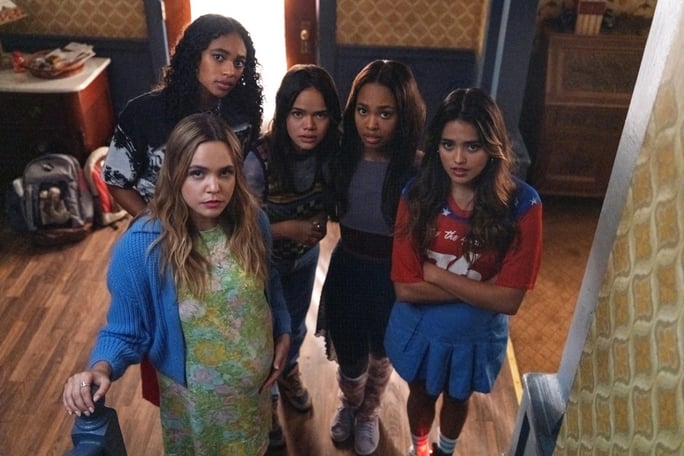
So often suspense happens in the dark. How do you approach lighting when you are working with slivers and silhouettes? The lighting in general feels like a layer of gauze is in the air, there is a density to the look. How do you achieve that?
A lot of backlight and smoke. The gauze look that you are describing, is from a ton of smoke. The smoke gives the image even more texture. As far as working in low light levels, I think what’s important is it’s not about underexposure or closing down the image. It’s about shapes and silhouettes. I have been thinking about moonlight a lot or unmotivated night light. What does that mean and look like? If you sit in your house on a full moon night, the light is pretty hard. It’s not a soft light. It’s a light just like the sun, that will create a shape on a wall. Those are all the things that can be capitalized on. It’s not just about darkness and underexposure, it’s actually about contrast. It’s about having a big difference. It’s the contrast that creates the drama. When you think about night and think about what darkness with all the lights off looks like.
In a city, it looks completely different than it would under a full moon. There is also a lot of hard light, like the street lights. Are you on the third story, does that mean there can be a lantern that is actually shooting light into the ceiling? The approach is also a deep observation of what actually happens at night. If I turn off all the lights, what shapes are you seeing? I think the hardest is no light inside the room with a no windows look. In the past I’ve leaned into soft top light. You can lean into soft top light or soft bounce light. In the end, we still want to see the faces of our characters. Darkness doesn’t mean just not putting any light on the faces. It’s about shaping the light on the face. We need access to that emotion. Or we are completely hiding that access to the face. It has to have a specific reason.
The production design is very cluttered, almost giving a feeling of the characters under the weight of their surroundings. How did design elements play a part in the choices you made?
I think design elements played a big impact on the choices I made. The deep color palette gave permission to a lot of unusual light sources, in terms of practicals we were able to use. The design being off kiltered or different allowed me to put light sources in places where if we were trying to depict a traditional modern middle-class home, I wouldn’t do the same things. Or put the types of light fixtures underneath cabinets that almost give off a green light that makes it look like it’s flickering and old. I can do that on Pretty Little Liars.
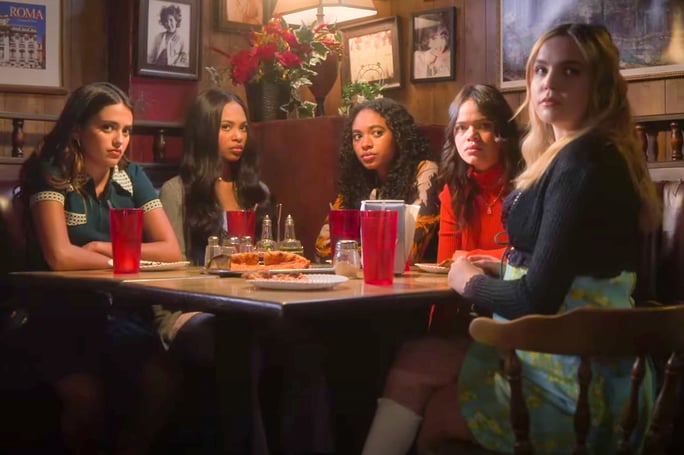
This series features an ensemble cast, are there any challenges when shooting or lighting a scene with five main characters?
Yes, the challenge is you have five main characters that have to be photographed within a scene. The way the scripts are written and these stories, it also always really behooves the director to get singles of the actors, because our scripts run really long and a lot of the time they have to cut time by cutting out dialogue. That’s difficult to do when you have two or three shots of characters in a scene. It’s just the sheer volume of coverage of shots that need to be captured is a lot when there are five people involved. Those were usually our three camera days. When we had a lot of ensemble scenes, we would bring in a third camera crew.
The original series was iconic. How are you leaning in to elements that made the series so beloved, but also keeping it fresh and unexpected?
The deep friendship between five girls. The friendship, also the rivalry, is what made the show so beloved in the original series. I think that’s very much there. I think these characters, just like the original characters, have a lot of depth and that’s what made them so beloved. I feel like that face is there. I do feel like so many other elements, it is a complete reboot. This world of these Pretty Little Liars is just so unique and different.
Can you break down a memorable or challenging scene from the show (without giving away spoilers of course) and take us through the choices in lighting, framing and movement?
Every episode had a big, iconic chase sequence that was previs'd and was oftentimes story boarded. It was the set piece of the episode. Within that there were many challenges. The most unique though, and the first time I had ever done one, was a hall of mirrors chase scene. It sounds exciting, but I had never done a scene like that, so I did a ton of research. A big question is, How do we not see the camera? Are we going to remove the camera in post? Also, the 2nd level challenge of the sequence, was that they are being chased by the creeper, A, and one of the characters sees the creeper and other doesn’t. So the discussions that Alex Pillai, the director and I had, were deep. Is this happening in her head? Is it more interesting if we do play it as it’s happening in her head? I really loved the IT hall of mirrors sequences. Alex also used that as one of his references. We story boarded it, we walked through it, we previs'd it. The day we shot it, we did 49 setups in 11.5 hours with two cameras.
Some tricks in a hall of mirrors scene, you make your mirrors be able to gimble, so you remove that element of always seeing ourselves. Then you have to sometimes lean into the thought that not every shot works in every moment because if you try and make every shot work in every moment, you will drive yourself crazy. We knew on some angles, when we are going to turn the corner, no matter what we will see the camera. We can flag it for VFX, but we worked very hard to do as little VFX as possible. We did things as practically as we could. While we knew we could maybe remove a camera here and there, we tried to cover ourselves in the edit. I think a hall of mirrors is an easy chase sequence, but those angles have to say something. We had zoom shots, very specific hand-held shots, dolly pushing into someone’s face for impact. In there is the orchestra of a visual language of a sequence like that. It does take quite a bit of preparation and thinking about what point of view you are shooting from. And what is it you are trying to achieve at that specific moment.
After all that preparation, what was amazing about it with this sequence, we had planned for the lighting to be one way. Then the day of shoot, Michael Grassi, our wonderful Executive Producer, came to use and asked if we were planning on using any red lights for this scene because Roberto was really feeling red for this scene. We had planned something completely different. Alex and I looked at each other, and came up with a plan that during one part of the chase, the lights would go out and she’s in the classic hall of mirrors, with the creeper chasing her. We incorporated that into the visual language of the sequence. That’s what’s awesome about having a really technically prepared sequence that we could also pivot and make spontaneous choices that really elevate this whole thing.
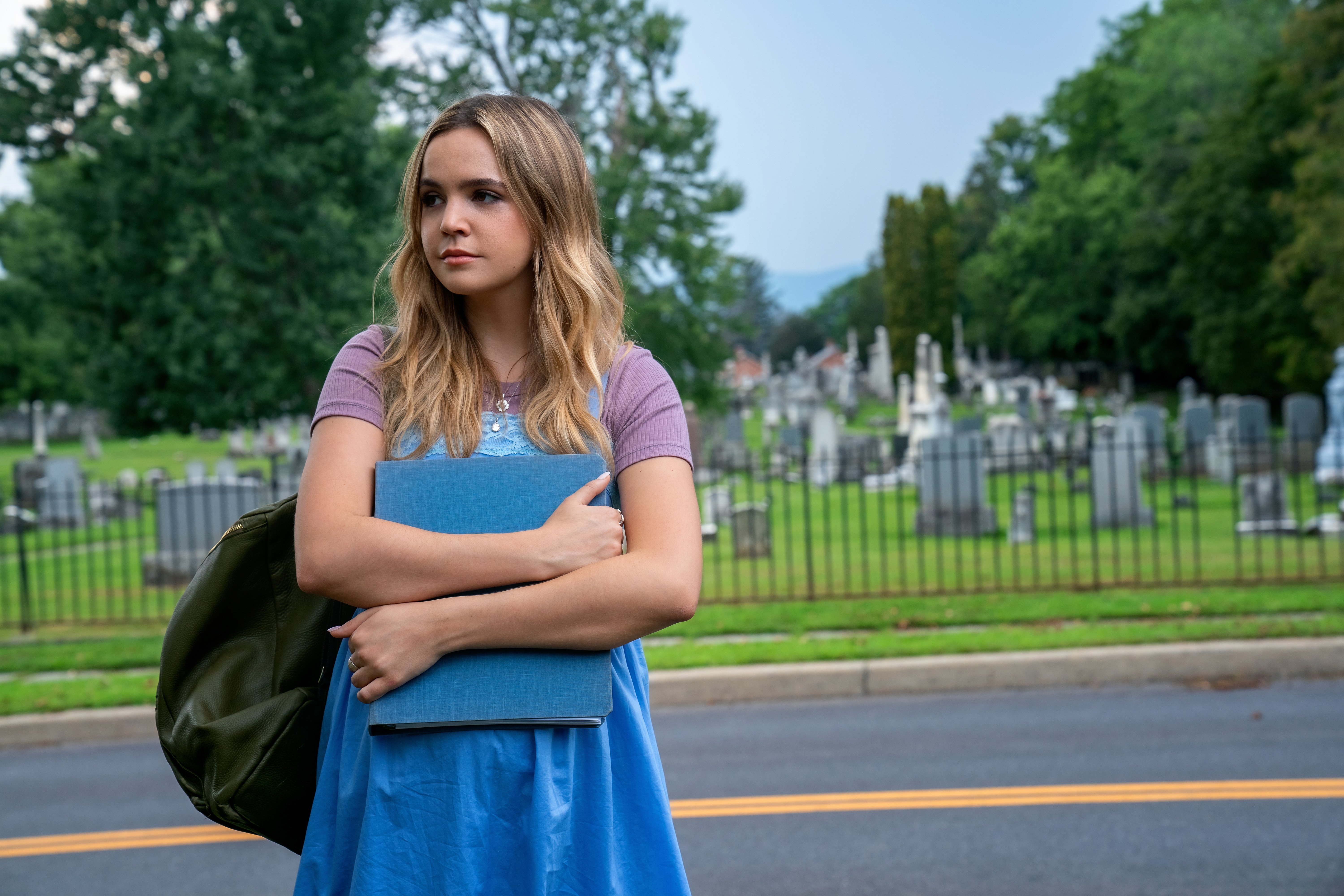
What is the most helpful thing you need from producers when working on set?
I think the most helpful thing is knowing that they are there to support the creative vision. Our producers on Pretty Little Liars were really awesome, in that respect. Even if we had budget issues here or there, they were also very quick to solve the problem. Support to make the show, to make the movie. Being the only cinematographer on a series that intense technically and logistically, I couldn’t do it without producers that aren’t truly supportive. I also work from that point of view, I’m there to give my best to the story. I’m not there to order a bunch of equipment for fun. It's important that we are all on the same page about what we are making visually.
The work itself is significant, but the working environment is key to success. Any life hacks you rely on to get through the day? Such as the best shoes to wear, gear bag or go-to snack?
My go-to has become the onesie, I picked it up from a first AD friend of mine. I have a lot of onesies. I think it’s the easiest way to dress for work as a cinematographer. I have a go-to super green supplement that I take every day. I also sit in an infrared sauna a couple of times a week. A good coffee, super greens, onesie and an infrared sauna.

